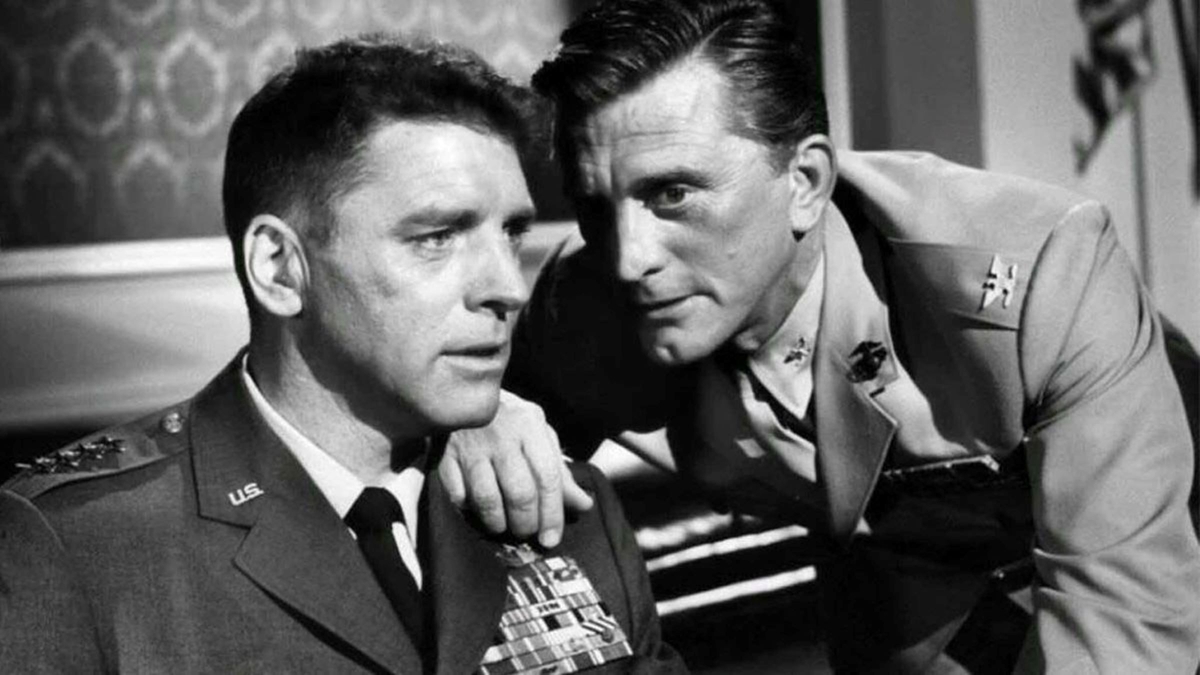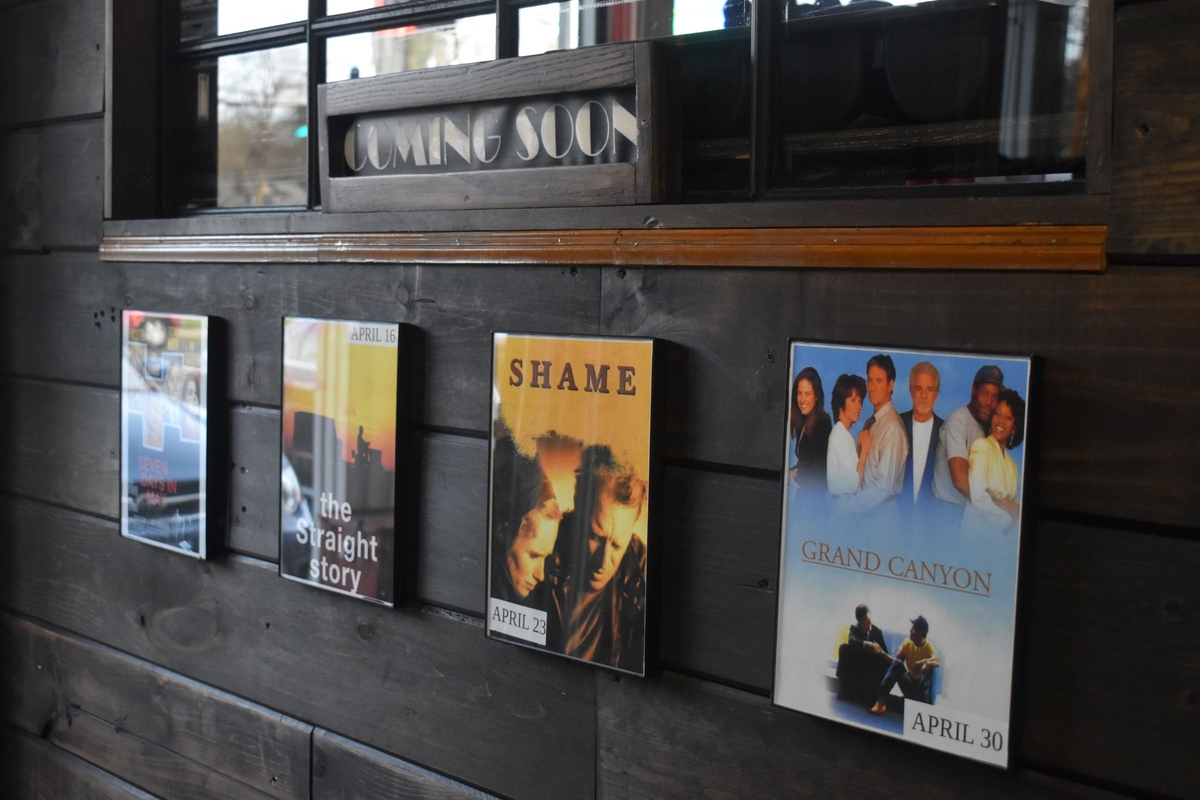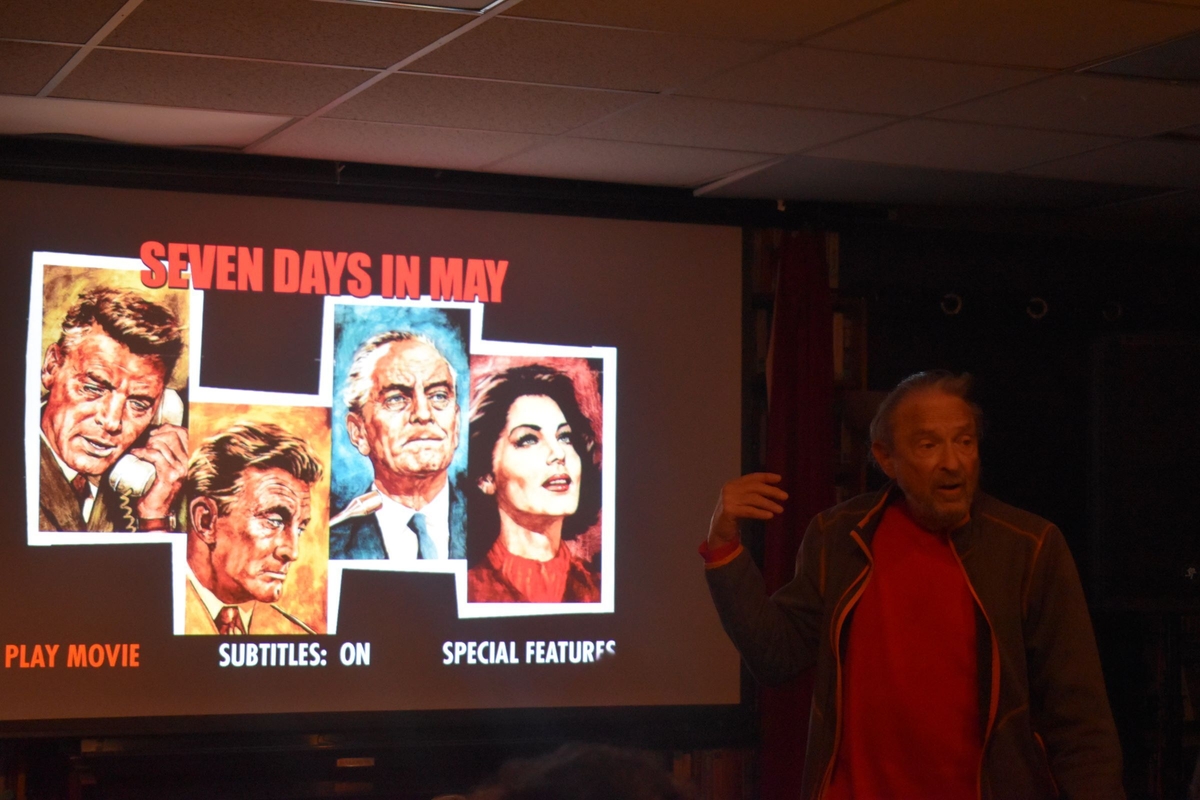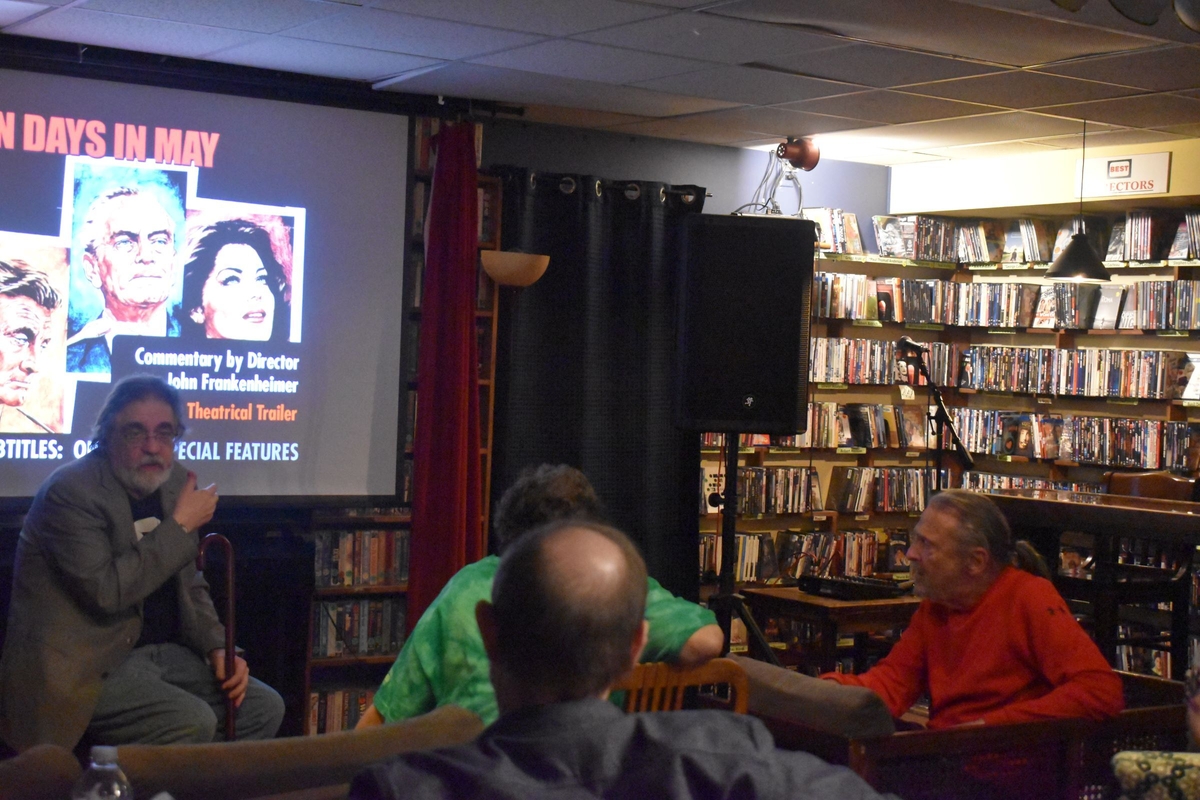
A still from Seven Days in May.
“The astounding story of an astounding military plot to take over the United States! The time is 1970 or 1980 or, possibly, tomorrow!”
Thus reads the tagline to the political thriller Seven Days in May, the first entry in April’s Tuesday night film screening series at Best Video. Last night an engrossed crowd took in the John Frankenheimer-directed and Rod Sterling-penned 1964 classic, based on the novel written by Fletcher Knebel and Charles W. Barley II and published in 1962.

Karen Ponzio Photo
This month's films for the series.
This series, called “Visions of Darkness and Light,” is presented by Hank Paper, founder of the beloved video store and venue, and Christopher Sharrett, PhD, Professor Emeritus of Visual and Sound Media at Seton Hall. Both were on hand to introduce the film and lead a Q&A about it afterward. Other films being screened in this particular series include David Lynch’s The Straight Story, Ingmar Bergman’s Shame, and Lawrence Kasdan’s Grand Canyon.
Julie Smith, Best Video’s executive director, came forward to introduce the “two esteemed gentlemen,” calling Paper “our founder and the reason we are here” and Dr. Sharrett a “longtime member and supporter.” Paper welcomed everyone, explaining that he and Sharrett picked four films “that still speak to us today, especially today perhaps.”
Noting that he first saw this film in the late 1960s, Paper said when he saw it recently again, he had “a totally different reaction to it” and was curious as to what people were going to think about it, hoping they would stay for the talkback afterward. He talked about Frankenheimer’s career, and how the director has “cut his teeth” on live television.
“For me, this is a brilliant example of film craft,” he added, praising its cinematography and art direction.
Sharrett said Seven Days in May was “a very timely film even though it was made 60 years ago … it is still chilling.” He also explained that the president in the film, played by Fredric March, was meant to be President Kennedy, who read the novel the film was based on and said to Frankenheimer in 1962 that “you should make a film of this because it could happen very easily.”
“It’s a film that speaks to us in all kinds of ways still,” he added.

Paper speaking before the film.
Frankenheimer immediately sets the tone for the antagonism that permeates the film with two sets of opposing protestors for and against the President outside of the White House. They come to blows in a scene that looks like it could be from a documentary. One sign states in big bold lettering, “Peace on earth or no peace at all.”
Not all messages in this film are so cut and dried, as we find out the President has signed a treaty with Russia that both countries will disarm their nuclear weapons in two months. His approval rating is said to be at 29 percent, which concerns him, as does the increasing popularity of General James Matoon Scott, played with stoicism laced with a hefty dose of deceit by Burt Lancaster. It seems the general, along with many Americans, is not a fan of this treaty. Colonel Martin “Jiggs” Casey, played with steely skepticism by Kirk Douglas, ends up uncovering a plot led by the general to stage a coup, overthrowing the President and not allowing the treaty its follow through.
Or has he? As viewers are led down Colonel Casey’s path of paranoia right along with him, one is never quite sure who is telling the truth and who is not. General Scott is hailed as “a hero of war, a stalwart protector of the peace.” His throngs of fans and supporters chanting “We Want Scott!” seem downright scary through Frankenheimer’s lens, while Lancaster’s natural charm amplifies the viewer’s uncertainty regarding his motives.
The supporting cast knocks it out of the park with mostly snappy dialogue. Dramatic monologues for the main players work well to keep the audience at the edge of its seat. The treatment of the only woman in the main cast — Ava Gardner as Eleanor Holbrook, the ex-lover of Scott and potential lover of Casey — was an unpleasant and necessary reminder of that era’s harsh treatment of women in general.
The Constitution is a centerpiece in this film as well, whether it be in the visuals for the opening and closing credits or spouted about as the hard line these men follow; one could not help but be reminded of public figures in present times holding it up in a similar way. Frankenheimer’s visuals throughout stay fairly crisp and focused, the black and white of the film giving it that extra dose of seriousness the subject matter commands. When the scene gets fuzzy or blurs, that particular moment is also one of disorientation.

Snacks were an integral part of this assignment.
Many in the audience were eager to not only ask questions of Paper and Sharrett about the film, but to offer their takes on certain scenes and themes. Those who had seen the film before commented on their take then and now, with Paper adding that during his most recent view of it, he found the film “downright scary.” One audience member asked if the country was as divided back then with regards to the media, and it was discussed how nowadays with the internet, most likely some of what had happened would have been revealed way sooner, which garnered laughter among many.
One audience member compared Seven Days in May to Dr. Strangelove, which came out in the same year. This led to a discussion of the symbolism of black arrows and missiles over the opening credits of the film. Paper thought the use of black and white film overall as opposed to color gave the movie an “air of documentary realism.”

Sharrett and Paper lead the discussion.
Both Paper and Sharrett added a wealth of background information about real-life events, such as the Cuban Missile Crisis and Eisenhower’s drop in the polls due to Joseph McCarthy’s anticommunist machinations. There was also much commentary about the prescience of the film’s subject matter, the wealth of dialogue, and yes, even the mistreatment of Gardner’s character.
To all of this I will add: If there is one thing I know about people who love films, it is that they also love talking about films. Whether it’s political strife or personal conflict, the next three screenings on the horizon for this series will each offer something just as meaty for those film lovers to chew on.
This film series continues every Tuesday in April at 8 p.m. at Best Video, with free entry for members and $10 for nonmembers. More information about the films scheduled can be found on Best Video’s website.




We have moved from a healthy mis-trust of the military to mandatory saluting.
Instead of more nuclear installations, NATO expansion or new bombers, I'd like universal healthcare, free college or trade education, massive investment in public transit and affordable housing.
Too bad I can't afford a lobbyist.